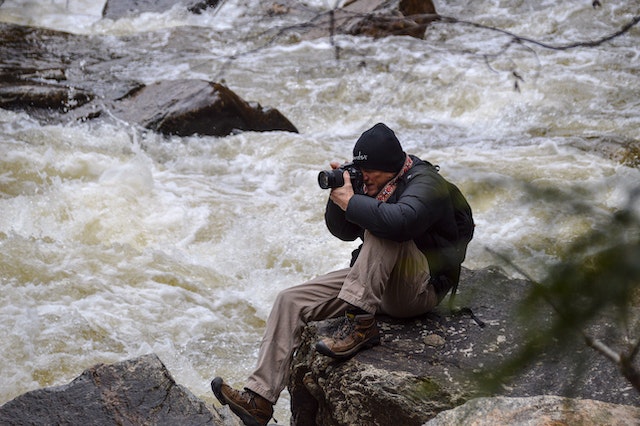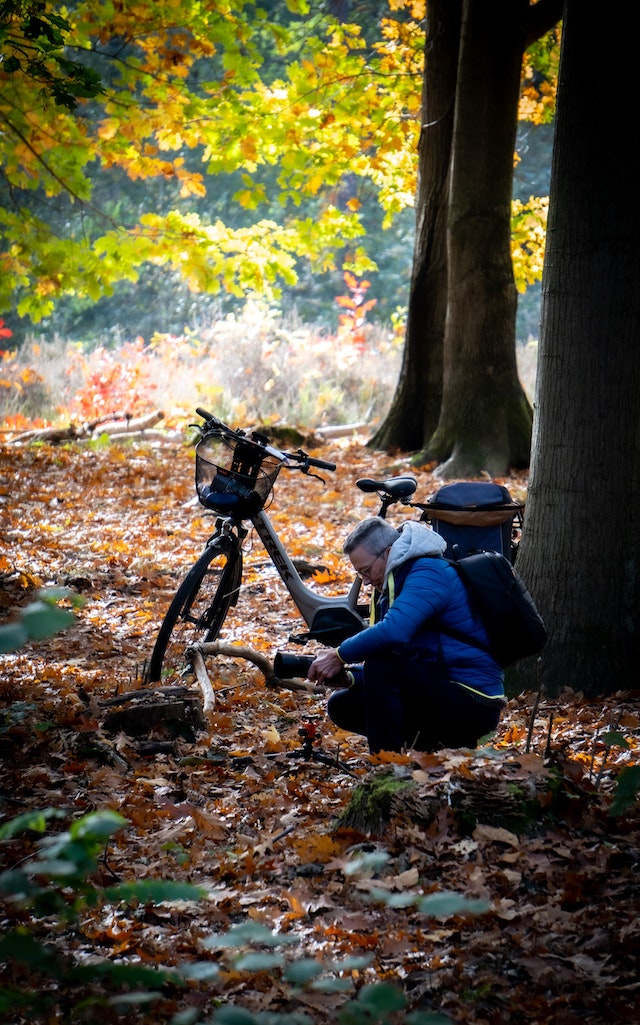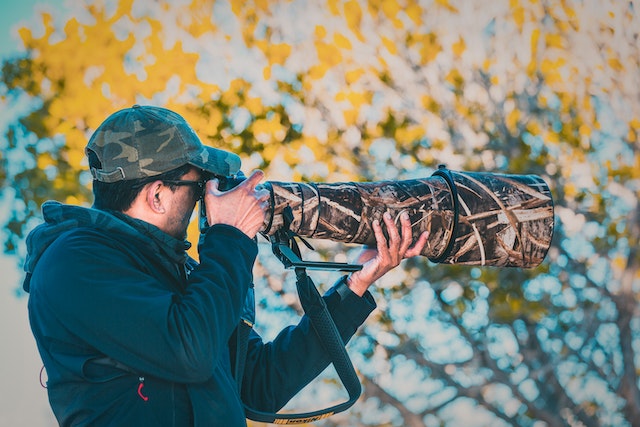
The thrill of capturing a moment with a camera is unparalleled. This is taken to the next level when you’re in the wild. Wildlife photography takes you on a journey to the heart of nature, allowing you to witness the magnificence of creatures we share this planet with.
From the smallest insects to the largest mammals, capturing the essence of a wild animal in its natural habitat is both a challenge and a reward for any photographer. Through a camera lens, we get to experience their world, their behaviors, their beauty, and their vulnerability.
Whether your passion is to document endangered species or to simply capture the beauty of nature, wildlife photography is a never-ending adventure. So grab your camera, pack your bags, and venture out into the wild, for there is a story to be told and a moment to be captured.
Getting started in wildlife photography
Choosing the right camera equipment is essential for capturing stunning wildlife photos. A camera with a high frame rate is ideal as it allows you to capture multiple photos in quick succession, giving you plenty of opportunities to capture the perfect shot. A good quality telephoto lens is also crucial in wildlife photography as it enables you to zoom in on the subject without disturbing them. It is recommended to invest in a lens with a focal length of at least 300mm.
Understanding camera settings and techniques is also important in wildlife photography. It is recommended to shoot in manual mode as it gives you complete control over the camera settings. In manual mode, you can adjust the aperture to control the depth of field, the shutter speed to control the exposure, and the ISO to control the amount of light entering the camera.
When it comes to photographing wildlife safely and ethically, it is important to respect the animals and their environment. Always keep a safe distance from the animals, and never interfere with their natural behavior. It is also important to research the area you plan to photograph in advance, as some areas may have restrictions and regulations. With the right equipment, technique, and respect for nature, you can capture stunning wildlife photos that tell a story and showcase the beauty of our planet’s creatures.
Preparing for a wildlife photography adventure
A wildlife photography adventure can be an exhilarating experience, but it also requires careful planning and preparation. Here are some tips to help you get ready for your next wildlife photography trip:

1. Research wildlife habitats and destinations: Do your research to find out what kinds of animals live in the areas you plan to visit. You can use online resources, guidebooks, and local experts to help you identify the best locations for your photography adventure.
2. Plan for the right time and season: Different animals have different behaviors and are more active during specific times of the day or year. Take this into consideration when planning your trip to ensure you get the best opportunities to capture the images you want.
3. Understand animal behavior and habits: Understanding an animal’s behavior can help you anticipate its movements and actions, allowing you to capture better photographs. Knowing animal habits will also help you determine the best time and place to find them.
4. Pack essentials for a successful wildlife photography trip: It’s important to pack light but also include the essentials for a successful photography trip. This may include sturdy hiking boots, rain gear, a tripod, extra batteries, and memory cards.
Wildlife photography is all about capturing the beauty and essence of animals in their natural habitat. As a photographer, it’s your responsibility to respect these creatures and their environment.
Techniques and Tips for Wildlife Photography
Composition and framing techniques: Composition and framing are essential parts of any photo, be it wildlife or anything else. In wildlife photography, the rule of thirds can be useful in creating a visually pleasing photo. Framing techniques can also be used to draw the viewer’s attention to the subject and create a story in the photo.
Mastering lighting conditions in the wild: The lighting conditions in the wild can be unpredictable, which can make or break your photo. Shooting during the golden hours (sunrise/sunset) can produce magical photos. On an overcast day, diffuse lighting can be used to create soft and even lighting on the subject.
Capturing action shots and freeze motion: Animals in the wild are highly dynamic, and capturing their actions is an exciting part of wildlife photography. For action shots, it is recommended to use a high shutter speed to freeze the motion. Shooting in burst mode can also be useful in capturing continuous motion.
Using camouflage and patience for close-up shots: To capture close-up shots of animals, it is essential to be patient and use camouflage to blend in with the surroundings.
This will help the animals to continue with their natural behavior without being disturbed. It is also important to note that animals have boundaries, and getting too close can be dangerous for both the photographer and the animal.

Post-processing and editing wildlife photos
Post-processing and editing are important steps in taking your wildlife photos to the next level. Once you have captured your images, the next step is to organize and select the best shots. This involves going through your photos and choosing the ones with the best composition, lighting, and framing. It is important to keep in mind the story you want to tell through your photos.
After selecting the best images, basic editing techniques can be applied to enhance the quality of the photos. These techniques may include adjusting the exposure, contrast, and saturation. Cropping can also be used to change the composition and remove any unnecessary elements in the photo.
Enhancing colors is another important aspect of wildlife photo editing. The colors in wildlife photos can be enhanced to bring out the natural vibrancy of the animals and their surroundings. This can be done by adjusting the hue, saturation, and luminance of specific colors.
Retouching and removing distractions can also be done in post-processing. This may involve removing any distracting elements in the photo, such as branches or other objects that may take away from the focal point of the image.
In order to maintain the natural feel of the photo, it is important not to overdo the editing. Overediting can result in an unrealistic or fake-looking image. Remember, the goal is to enhance the beauty of the natural subjects through your photography.
Showcasing and sharing wildlife photography
After putting in so much effort and hard work, it’s important to showcase and share your wildlife photos with the world. Here are some ways to do so:
Create a portfolio
Creating a portfolio of your best wildlife photographs can help you showcase your work to potential clients and galleries.
A portfolio can consist of a collection of your best photographs in a printed or online format. It should be visually appealing and highlight your technical skills and artistic vision.

Establish your presence online
Building an online presence and sharing your photos on social media platforms can help you gain a larger audience and connect with like-minded individuals in the photography community. You can also use social media to network with other photographers and potential clients. However, be sure to protect your photographs and only share them on reputable sites or with watermarks.
Take part in contests and exhibitions
Entering photography contests and exhibitions can also be a way to gain recognition and exposure for your work. It can be a great opportunity to receive valuable feedback from judges and other industry professionals. Participating in photography competitions can also help you hone your skills and learn from others.
Support wildlife conservation
Contributing to wildlife conservation through photography is a meaningful and impactful way to share your work. By highlighting the beauty and importance of wildlife, you can raise awareness about conservation issues and inspire others to take action. Consider partnering with conservation organizations or donating a portion of your profits towards conservation efforts.
Ethics and conservation in wildlife
As a photographer venturing into the wilderness to capture stunning wildlife photographs, it is crucial to practice ethical and sustainable photography practices. Here are some guidelines to follow:

Respecting wildlife and their natural habitats: The welfare of animals should always come first, and it is important to take precautions to prevent disturbance or injury to the animals. When photographing, stay at a safe distance from the animals, and never interfere with their natural behavior. Do not bait or lure animals for the sake of photography, and avoid crowded areas where wildlife may feel threatened.
The role of photographers in raising awareness: Wildlife photography can be a powerful tool for raising awareness about conservation issues. As a photographer, you have the opportunity to inform and educate people about the beauty and vulnerability of our planet’s creatures. Use your photos to tell compelling stories and engage your audience with conservation efforts.
Supporting conservation initiatives through photography: Consider partnering with conservation organizations to contribute to their efforts through photography. You can donate a percentage of your profits from wildlife photography to wildlife conservation initiatives, or use your photos to raise awareness and funds for conservation projects.
Promoting responsible tourism and photography practices: Responsible tourism and photography practices involve being mindful of the impact we have on the environment and wildlife. Consider supporting responsible tourism operators who follow sustainable and ethical practices. Avoid locations that exploit animals for entertainment, such as animal performances or captive animal encounters. Be respectful of the natural environment and leave no trace.
Capture the heart of the wild
Wildlife photography is an art that requires patience, skill, and respect for the animals and their environment. It takes us on a journey into the heart of nature, where we can witness the breathtaking beauty of our planet’s creatures.
As a photographer, we have the power to raise awareness about conservation issues and inspire others to take action. It is your responsibility to practice ethical and sustainable photography practices to ensure that we do not harm the animals and their habitats while capturing their essence through our lenses. So, grab your cameras, venture out into the wild, and capture the magic of nature through your photos, all while promoting responsible practices and supporting conservation efforts. Happy clicking!